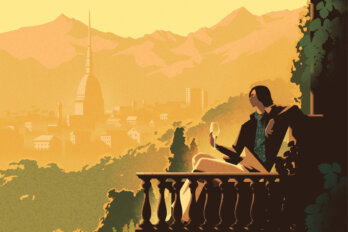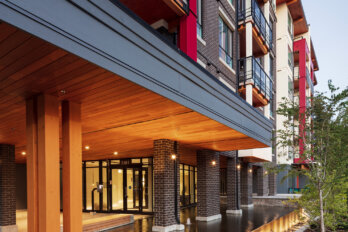As the early morning light sifted downward through the narrow canyon walls, there was little sound other than a fluttering of bird wings. I was making my approach into Petra through the ancient, serpentine passageway called the Siq, as most visitors do. It was early enough in the day that I felt completely alone in this magical place, able to pause, breathe, and delay the dramatic arrival as much as I liked.
But nothing could have prepared me for the breathtaking sight of the Treasury coming into view. There was nothing to do but stare at this jewel-like wonder, carved so long ago and hidden for so many centuries. Time truly stood still. By the second century BC, Petra — which is also known as “the Rose City” due to the colour of the stone it was carved from — was the thriving capital of the Nabataean kingdom. Its extravagant architecture bears witness to its former wealth.
Petra was the hub of important trade routes that connected Damascus with Baghdad and beyond, with long caravans laden with spices, silks, and other valuables passing through. It was a crossroads, a meeting place of many cultures, much like Jordan is today. Which is why there’s no better place to explore the past and present of the Middle East, in a country renowned for its hospitality and warm, welcoming people.
Sometimes forgotten in the rush to see Petra is that Jordan encompasses more than twenty-five major historic sites that bridge the centuries and the civilizations that have settled in this land. A few of the many highlights include Mount Nebo, where tradition holds that Moses caught sight of the Holy Land; the magnificent colonnades, spacious plazas, and impressive hippodrome of the Roman city of Jerash; the enigmatic desert castles built by the Ummayad dynasty in the seventh century; and the ancient trading hub of Madaba, with its sixth-century Byzantine churches, whose works of art include the oldest mosaic map of Jerusalem and the Holy Land. Many of these sites can be seen on day trips out of Amman, the capital city of Jordan.

Amman, a bustling city of four million that was known to the ancient Greeks as Philadelphia and in the Bible as Rabath Ammon, is where a journey to the country typically begins. Scattered across its seven hills are vestiges of past civilizations. Jabal Al Qal’a (Citadel Hill) is at its centre. Amman’s most impressive monument is the domed Umayyad palace complex, which dates back to the first half of the eighth century.
Nearby are the glorious ruins of the Roman Temple of Hercules, its massive columns jutting skyward next to a very Instagrammable giant stone fist thought to be part of a long demolished Herculean statue. In the city centre is the Roman Amphitheatre, where up to 6,000 people gather regularly for performances by local musicians and international stars.
Less well known than Jordan’s abundant historic sites is its wealth of natural adventures: diving the coral reefs in the Red Sea resort of Aqaba; hiking sections of the 650-kilometre Jordan Trail; mountaineering and canyoning in the wadis (canyons and ravines) that make up Jordan’s Rift Valley; riding camels (or atvs) over the red sands of Wadi Rum; and floating in the mineral-rich Dead Sea.
Nature lovers and adventure seekers can spot birds and other wildlife in the Dana Biosphere Reserve, or explore the river-filled canyons of the Mujib Biosphere Reserve, where hikers end their day by cooling off in a natural water park.
|
Nighttime brings an entirely different experience. An overnight stay in a Bedouin camp in Wadi Rum is unforgettable, with lanterns illuminating the cliffs high above. Each evening, a traditional zarb dinner of chicken, lamb, and vegetables is ceremoniously unearthed from an underground oven for a festive feast set to live music and dancing. The songs continue around the campfire, creating a timeless atmosphere and the perfect spot to enjoy some of the best stargazing on the planet. Petra becomes hauntingly beautiful after dark, particularly so during Petra by Night, an exploration of the city by candlelight. The evening I participated, I retraced my steps along the Siq and arrived at the Treasury to see it transformed, illuminated with |  |
Upon our departure, the wistful music faded and the silence returned, except for the sound of our footfalls.






